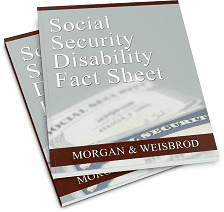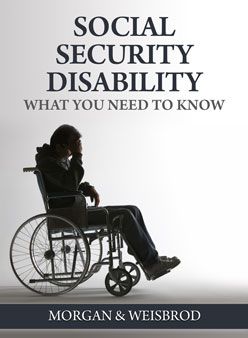Chronic obstructive pulmonary disease (COPD) is a general term that is used to describe various lung diseases. Two of the most common are chronic bronchitis and emphysema. COPD typically causes obstructed airflow in and out of the lungs. Victims also often end up with abnormalities in their lung structure, as well as limited airflow.
There are many causes of COPD including smoking, air pollution, and occupational dust. Regardless of the cause of the condition, the result may be an inability to work, which can lead to a need for Social Security disability benefits.
What Are the Symptoms of COPD?
When suffering from COPD, the Mayo clinic reports that a person may experience the following:
- Shortness of breath
- Wheezing
- Coughing
- Tightness in the chest
- Respiratory infections
- Lack of energy
- Unintentional weight loss
These COPD symptoms may be severe, making it difficult or impossible to carry out activities of daily living, including working. COPD sufferers may need to pursue disability benefits.
What Is the Treatment for COPD?
When assessing an application for benefits due to COPD, the Social Security Administration will review medical records to determine whether the applicant followed doctor’s orders. This includes following through on suggested treatment, such as:
- Oxygen therapy
- Pulmonary rehabilitation
- Medication
When it is difficult to breathe, it can be difficult to do nearly everything else.
COPD Is a Condition Recognized by the Social Security Administration
To qualify under the Social Security disability listing of impairments, you must show one of the following:
- A diagnosis of chronic obstructive pulmonary disease with a forced expiratory volume (FEV) that meets certain criteria.
- A diagnosis of chronic restrictive ventilatory disease with an FEV that meets certain criteria.
- Chronic impairment of gas exchange due to clinically documented pulmonary disease that meets specific criteria.
- Arterial blood gas values of PO2 and simultaneously determined PCO2 during steady state exercise breathing room air that meet specific criteria.
Even if you are not able to meet the above criteria, you may still be eligible for benefits. It is very important to consult with an experienced attorney who can help guide you through this process. Ready to learn more? Check out our free Social Security Disability Fact Sheet for more information or start a live chat with us today.

by Paul B. Burkhalter Managing Partner of Morgan & Weisbrod, Board Certified in Social Security Disability Law.
Blog
Posted on 03/22/2018"
Social Security Disability Eligibility for Bullous Diseases
Posted on 03/16/2018"
How to Prepare an SSDI Application If You Have Hemophilia
Posted on 03/13/2018"
Common Questions in a Social Security Disability Hearing
Get Help Now
Contact us today for a free, no obligation consultation!



